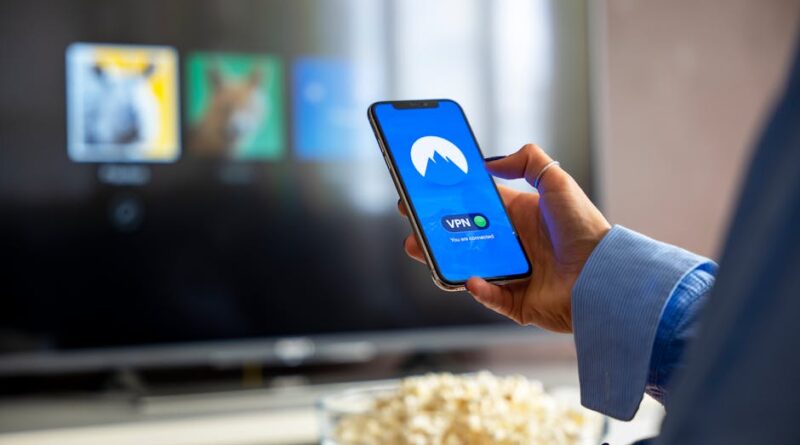How to Keep Your Mobile Devices Secure in a Connected World
In today’s hyper-connected world, our mobile devices have become an essential part of our daily lives. From smartphones to tablets, these devices store a vast amount of personal and sensitive information, making them prime targets for cybercriminals. With the increasing prevalence of cyber threats, it is crucial to understand how to keep your mobile devices secure in a connected world. In this comprehensive guide, we will explore the various strategies and best practices to safeguard your devices from potential security breaches.
The Evolution of Mobile Security

Mobile security has evolved significantly over the years as technology continues to advance. In the early days of mobile devices, security measures were minimal, and users were often unaware of the potential risks. However, with the rise of mobile banking, shopping, and communication, the need for robust security protocols has become more critical than ever.
One of the most significant advancements in mobile security is the introduction of biometric authentication, such as fingerprint and facial recognition. These technologies have made it more challenging for unauthorized users to access sensitive information on mobile devices. Additionally, encryption techniques have improved to protect data both in transit and at rest, ensuring that even if a device is lost or stolen, the data remains secure.
Despite these advancements, cyber threats continue to evolve, requiring users to stay vigilant and informed about the latest security practices. In the following sections, we will delve into the key strategies for keeping your mobile devices secure in a connected world.
Secure Your Device with Strong Passwords and Biometric Authentication

One of the most basic yet essential steps to secure your mobile device is to set up strong passwords and enable biometric authentication. A strong password should be complex, combining letters, numbers, and special characters to make it difficult for hackers to guess. Avoid using easily guessable passwords like “123456” or “password,” as these can be cracked within seconds.
Additionally, biometric authentication adds an extra layer of security by using unique biological traits, such as fingerprints or facial features, to unlock your device. This technology is not only convenient but also highly secure, as it is challenging to replicate or forge biometric data.
By combining strong passwords with biometric authentication, you can significantly reduce the risk of unauthorized access to your mobile device and the sensitive information it contains.
Keep Your Operating System and Apps Up to Date

Regularly updating your device’s operating system and apps is crucial for maintaining security. Software updates often include patches for known vulnerabilities that hackers can exploit to gain unauthorized access to your device. By keeping your device up to date, you can ensure that it is protected against the latest security threats.
Many users ignore software updates due to inconvenience or lack of awareness about their importance. However, failing to update your operating system and apps can leave your device vulnerable to cyber attacks. Make it a habit to check for updates regularly and install them promptly to keep your device secure.
Additionally, be cautious when downloading apps from third-party sources, as they may contain malware or malicious code. Stick to reputable app stores like Google Play Store or Apple App Store, where apps undergo rigorous security checks before being made available to users.
Use a VPN to Encrypt Your Internet Connection

When using your mobile device to connect to public Wi-Fi networks, such as those found in cafes, airports, or hotels, your data is at risk of interception by cybercriminals. Public Wi-Fi networks are often unsecured, making it easy for hackers to eavesdrop on your online activities and steal sensitive information.
To protect your data while using public Wi-Fi, consider using a Virtual Private Network (VPN) to encrypt your internet connection. A VPN creates a secure tunnel between your device and the internet, preventing third parties from monitoring your online activities. This encryption ensures that your data remains private and secure, even when using unsecured Wi-Fi networks.
There are many VPN services available, both free and paid, that offer varying levels of security and features. Choose a reputable VPN provider with a no-logs policy to ensure that your data is not stored or shared with third parties.
Enable Find My Device and Remote Wipe
In the unfortunate event that your mobile device is lost or stolen, it is essential to have measures in place to locate and protect your data. Most modern smartphones and tablets come with built-in features like Find My Device, which allows you to track the location of your device remotely.
By enabling Find My Device on your device, you can locate it on a map, play a sound to help you find it if it’s nearby, or remotely lock and erase the data on the device. Remote wipe is especially crucial if your device contains sensitive information that you want to protect from falling into the wrong hands.
It is important to set up Find My Device and remote wipe functionality on your device as a precautionary measure, so you can take immediate action in case your device is lost or stolen.
Be Wary of Phishing Attacks and Suspicious Links
Phishing attacks are one of the most common methods used by cybercriminals to steal sensitive information from unsuspecting users. These attacks often involve sending fraudulent emails or text messages that appear to be from legitimate sources, such as banks, social media platforms, or government agencies.
To protect yourself from phishing attacks, be cautious when clicking on links or opening attachments in unsolicited emails or messages. Look for red flags such as spelling errors, unfamiliar senders, or urgent requests for personal information. When in doubt, contact the supposed sender directly to verify the authenticity of the communication.
Additionally, be wary of suspicious links that you encounter while browsing the internet or using apps. Avoid clicking on pop-up ads or links from unfamiliar websites, as they may lead to malicious websites designed to steal your data or infect your device with malware.
Secure Your Data with Encryption and Backup
Encrypting your data is essential for protecting it from unauthorized access, especially in the event of a lost or stolen device. Most modern mobile devices offer built-in encryption features that allow you to encrypt your data with a secure key, making it unreadable without the decryption key.
Additionally, regularly backing up your data to a secure cloud storage service or external hard drive ensures that you can recover your information in case of data loss or device damage. Backing up your data also provides an extra layer of protection against ransomware attacks, where hackers encrypt your data and demand a ransom for its release.
By encrypting your data and regularly backing it up, you can safeguard your information from unauthorized access and ensure that you can recover it in case of unforeseen events.
Common Misconceptions
One common misconception about mobile security is that only high-profile individuals or businesses are at risk of cyber attacks. In reality, cybercriminals target users of all backgrounds, as any device connected to the internet is a potential target for exploitation.
Another misconception is that using antivirus software is enough to protect your mobile device from security threats. While antivirus software can help detect and remove malware, it is not foolproof and should be used in conjunction with other security measures to provide comprehensive protection.
Conclusion
Securing your mobile devices in a connected world is paramount to safeguarding your personal and sensitive information from cyber threats. By following the strategies outlined in this guide, such as using strong passwords, keeping your device up to date, and enabling biometric authentication, you can significantly reduce the risk of security breaches.
Remember to stay vigilant against phishing attacks, be cautious when using public Wi-Fi networks, and encrypt your data to protect it from unauthorized access. By implementing these best practices and staying informed about the latest security trends, you can enjoy the convenience of mobile technology without compromising your security.
How do you ensure the security of your mobile devices in a connected world? Share your tips and experiences in the comments below!




